Our official English website, www.x-mol.net, welcomes your
feedback! (Note: you will need to create a separate account there.)
Enhancing Luminescence and X-ray Absorption Capacity of Eu3+:LaF3 Nanoparticles by Bi3+ Codoping
ACS Omega ( IF 3.7 ) Pub Date : 2019-01-09 00:00:00 , DOI: 10.1021/acsomega.8b03160
Daniel González Mancebo 1 , Ana Isabel Becerro 1 , Ariadna Corral 2 , María Moros 3 , Marcin Balcerzyk 2 , Jesús M. de la Fuente 3 , Manuel Ocaña 1
ACS Omega ( IF 3.7 ) Pub Date : 2019-01-09 00:00:00 , DOI: 10.1021/acsomega.8b03160
Daniel González Mancebo 1 , Ana Isabel Becerro 1 , Ariadna Corral 2 , María Moros 3 , Marcin Balcerzyk 2 , Jesús M. de la Fuente 3 , Manuel Ocaña 1
Affiliation
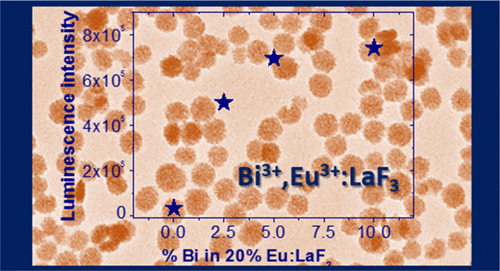
|
Bi3+ codoping has been proposed in this work with a twofold objective, namely, enhancing the luminescence emission of Eu3+:LaF3 nanoparticles (NPs) and increasing their X-ray attenuation capacity, with the purpose of obtaining a bimodal bioprobe for luminescence bioimaging and X-ray computed tomography. The synthesis method, reported here for the first time for LaF3 particles, allowed obtaining uniform, nonaggregated NPs using a homogeneous precipitation in polyol medium at room temperature in just 2 h. The simplicity of the synthesis method allows the large-scale production of NPs. LaF3 NPs with different Eu3+ contents were first synthesized to find the critical Eu3+ concentration, producing the highest emission intensity. This concentration was subsequently used to fabricate Bi3+–Eu3+-codoped LaF3 NPs using the same method. The emission intensity of the codoped NPs increased in more than one order of magnitude, thanks to the possibility of excitation through the Bi3+ → Eu3+ energy-transfer band. The luminescence properties of the codoped NPs were analyzed in detail to find the mechanism responsible for the emission enhancement. Finally, it was demonstrated that the high atomic number of Bi3+, higher than that of lanthanides, was an added value of the material because it increased its X-ray attenuation capacity. In summary, the LaF3 NPs codoped with Eu3+ and Bi3+ presented in this work are promising candidates as a bimodal bioprobe for luminescence bioimaging and X-ray computed tomography.
中文翻译:

Bi 3+共掺杂增强Eu 3+:LaF 3纳米粒子的发光和X射线吸收能力
在这项工作中,Bi 3+共掺杂的目的是双重的,即增强Eu 3+:LaF 3纳米颗粒(NPs)的发光发射并提高其X射线衰减能力,目的是获得一种双峰生物探针。发光生物成像和X射线计算机断层扫描。此处首次报道了LaF 3颗粒的合成方法,该方法使用在多元醇介质中的均相沉淀,在室温下仅2小时即可获得均匀的,非聚集的NP。合成方法的简单性使得可以大规模生产NP。首先合成具有不同Eu 3+含量的LaF 3 NP,以找到临界Eu 3+浓度,产生最高的发射强度。此浓度随后用于使用相同方法制造Bi 3+ -Eu 3+掺杂的LaF 3 NP。由于通过Bi 3+ →Eu 3+能量转移带激发的可能性,共掺杂NP的发射强度增加了一个以上的数量级。详细分析了共掺杂纳米颗粒的发光特性,以寻找引起发射增强的机理。最后,证明了Bi 3+的高原子数(高于镧系元素)是该材料的附加值,因为它提高了其X射线衰减能力。总之,LaF这项工作中提出的与Eu 3+和Bi 3+共掺杂的3种NPs有望成为发光生物成像和X射线计算机断层扫描的双峰生物探针。
更新日期:2019-01-09
中文翻译:

Bi 3+共掺杂增强Eu 3+:LaF 3纳米粒子的发光和X射线吸收能力
在这项工作中,Bi 3+共掺杂的目的是双重的,即增强Eu 3+:LaF 3纳米颗粒(NPs)的发光发射并提高其X射线衰减能力,目的是获得一种双峰生物探针。发光生物成像和X射线计算机断层扫描。此处首次报道了LaF 3颗粒的合成方法,该方法使用在多元醇介质中的均相沉淀,在室温下仅2小时即可获得均匀的,非聚集的NP。合成方法的简单性使得可以大规模生产NP。首先合成具有不同Eu 3+含量的LaF 3 NP,以找到临界Eu 3+浓度,产生最高的发射强度。此浓度随后用于使用相同方法制造Bi 3+ -Eu 3+掺杂的LaF 3 NP。由于通过Bi 3+ →Eu 3+能量转移带激发的可能性,共掺杂NP的发射强度增加了一个以上的数量级。详细分析了共掺杂纳米颗粒的发光特性,以寻找引起发射增强的机理。最后,证明了Bi 3+的高原子数(高于镧系元素)是该材料的附加值,因为它提高了其X射线衰减能力。总之,LaF这项工作中提出的与Eu 3+和Bi 3+共掺杂的3种NPs有望成为发光生物成像和X射线计算机断层扫描的双峰生物探针。


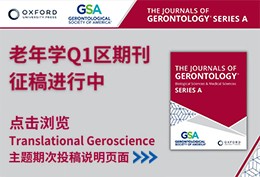
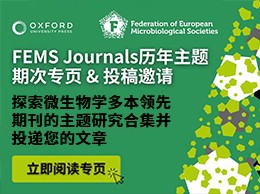





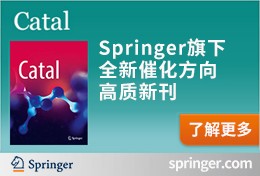
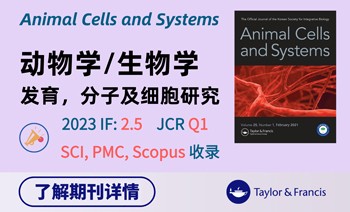










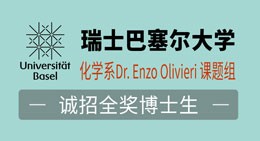











 京公网安备 11010802027423号
京公网安备 11010802027423号